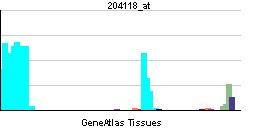Entrez 962 | Ensembl ENSG00000117091 | |
 | ||
Aliases CD48, BCM1, BLAST, BLAST1, MEM-102, SLAMF2, hmCD48 molecule External IDs MGI: 88339 HomoloGene: 1347 GeneCards: CD48 | ||
CD48 antigen (Cluster of Differentiation 48) also known as B-lymphocyte activation marker (BLAST-1) or signaling lymphocytic activation molecule 2 (SLAMF2) is a protein that in humans is encoded by the CD48 gene.
Contents
CD48 is a member of the CD2 subfamily of the immunoglobulin superfamily (IgSF) which includes SLAM (signaling lymphocyte activation molecules) proteins, such as CD84, CD150, CD229 and CD244. CD48 is found on the surface of lymphocytes and other immune cells, dendritic cells and endothelial cells, and participates in activation and differentiation pathways in these cells.
CD48 was the first B-cell-specific cellular differentiation antigen identified in transformed B lymphoblasts.
Structure
The gene for CD48 is located in chromosome 1q23 and contains 4 exons, each exon encoding one of the 4 domains of CD48: signal peptide, variable (V) domain, constant 2 (C2) domain and the glycophosphatidylinositol anchor (GPI anchor). The cDNA sequence of 1137 nucleotides encodes a 243 amino acid polypeptide of about 45 kDa. It consists of a 26 amino acid signal peptide, 194 amino acids of mature CD48 (V and C2 domains) and the C-terminal 23 amino acid segment comprising the GPI anchor. The GPI linkage of CD48 to the cell surface is through serine residue 220. CD48 does not have a transmembrane domain, however, but is held at the cell surface by a GPI anchor via a C-terminal domain which can be cleaved to yield a soluble form of the receptor. The CD48 protein is heavily glycosylated, with five possible asparagine-linked glycosylation sites at positions 40, 44, 104, 162 and 189, respectively. Approximately 35-40% of the total molecular weight is attributed to the carbohydrate side chains.
Interactions
CD48 was found to have a very low affinity for CD2 with dissociation constant (
Cell distribution
CD48 is expressed on all peripheral blood lymphocytes (PBL) including T cells, B cells, Null cell and thymocytes. It is also found on the surface of activated T cells, monocytes and granulocytes. Like all other GPI anchor protein (GPI-AP), CD48 is deficient in erythrocytes (red blood cells).
T cell activation
CD48 and CD2 molecular coupling together with other interaction pairs of CD28 and CD80, TCR and peptide-MHC and LFA-1 and ICAM-1 contribute to the formation of an immunological synapse between a T cell and an antigen presenting cell. CD48 interaction with CD2 has been shown to promote lipid raft formation, T cell activation and the formation of caveolae for macrophages through cell signal transductionthe via GPI moieties.
Clinical Significance
CD48 is being investigated amongst other markers in research on inflammation markers and therapies for HIV/AIDS.
